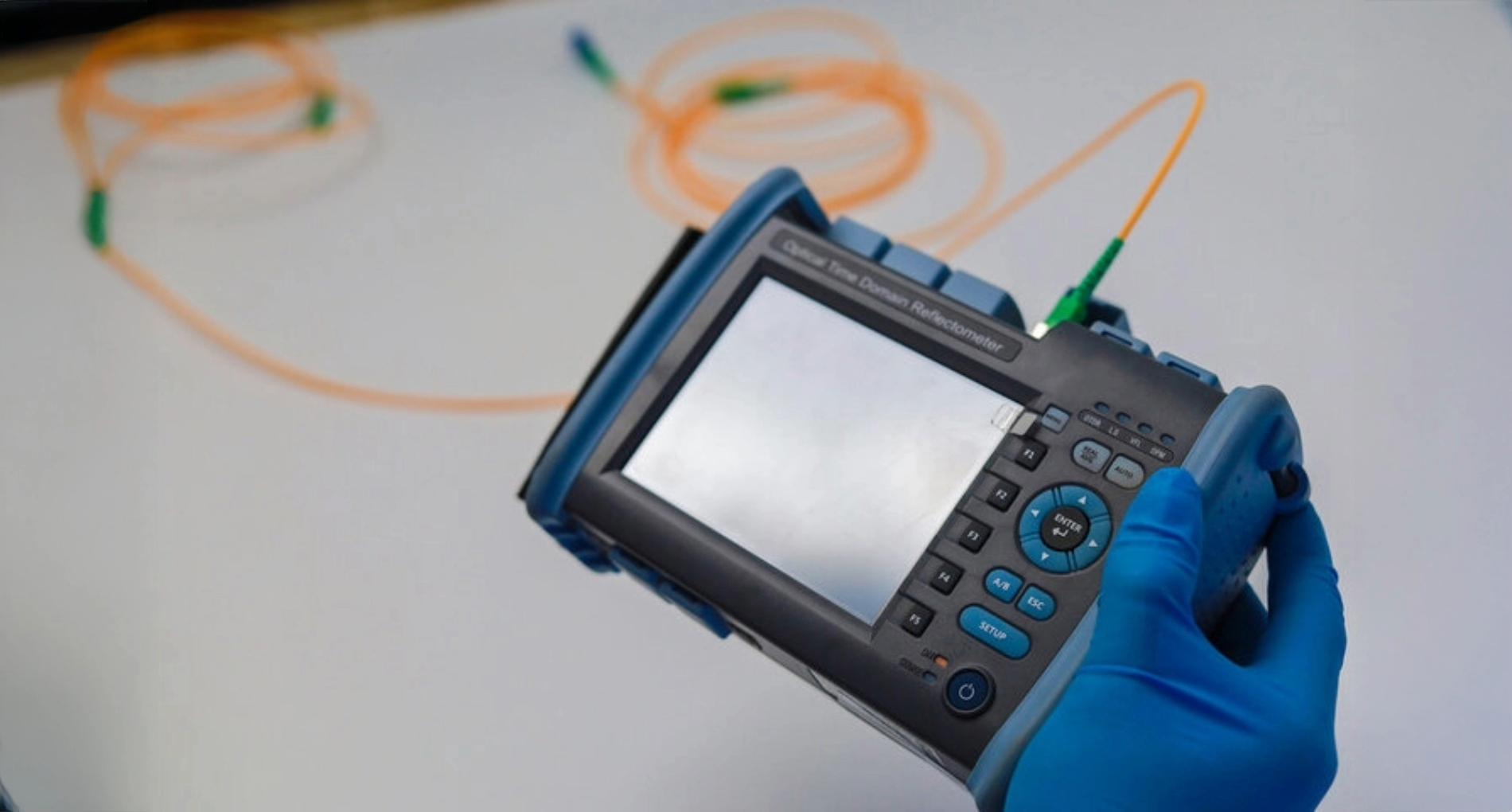Currently Empty: $0.00
In the fiber optic world, accurate diagnostics and maintenance are essential to ensure uninterrupted data transmission. One of the most important tools in a technician’s toolkit is the OTDR – or Optical Time-Domain Reflectometer. But when exactly should you use an OTDR?
This article answers that question and explains how and when this tool becomes essential in the field.
🔍 What Is an OTDR?
An OTDR (Optical Time-Domain Reflectometer) is a device used to test the integrity of fiber optic cables. It works by sending a series of light pulses down a fiber and measuring the light that is reflected back. This allows technicians to:
- Locate faults and breaks
- Measure the length of the fiber
- Evaluate splice and connector loss
- Verify the quality of installations
✅ When to Use an OTDR
Here are the most common and critical situations where using an OTDR is a must:
1. After New Fiber Installation
Once a new fiber optic line is installed, it’s essential to verify the quality and continuity of the link. An OTDR provides a trace or graph that helps verify:
- End-to-end connectivity
- Accurate fiber length
- Splice quality and connector performance
- Loss levels within acceptable standards
This is often called certification testing and is critical before turning the network live.
2. During Routine Network Maintenance
Fiber networks can degrade over time due to environmental conditions or physical damage. Using an OTDR during scheduled maintenance helps to:
- Detect small faults early
- Compare current trace with the original (baseline)
- Prevent costly downtime by addressing wear or degradation proactively
3. Troubleshooting and Fault Localization
If a fiber link suddenly experiences performance issues or signal loss, an OTDR is your best tool for quick fault detection. It can:
- Pinpoint the exact location (in meters) of a break, bend, or high-loss splice
- Identify reflective events (such as bad connectors)
- Save time and effort by eliminating guesswork in field repairs
4. Verifying Splicing and Connector Work
Whether you’re joining fibers through splicing or terminating with connectors, an OTDR helps verify:
- Acceptable insertion loss
- Minimal reflectance
- Quality of workmanship
This is especially useful in large-scale projects involving multiple splices and joints.
5. Before Network Handover or Documentation
For contractors or project managers, OTDR testing results are often required as part of network documentation before handing over to the client. It validates the installation quality and serves as proof in case of future disputes or faults.
📊 What You Get from an OTDR Test
An OTDR generates a visual representation called a trace, which shows:
- Reflective events (connectors or breaks)
- Non-reflective events (splices or bends)
- Fiber loss per kilometer
- Total link length
- Overall link loss
Interpreting this data allows technicians to diagnose and optimize the network.
🔧 Bonus Tip: Combine with Power Meter Testing
While OTDRs are excellent for diagnostics, they should be complemented with an optical power meter and light source for full end-to-end loss testing. The combination of both tools ensures thorough testing of your fiber link.
🧩 Conclusion
An OTDR is not just for emergencies—it’s a critical testing tool throughout the entire lifecycle of a fiber optic network. From installation to maintenance and troubleshooting, knowing when to use an OTDR helps ensure your fiber infrastructure remains reliable and high-performing.
Whether you’re a field technician, contractor, or network engineer, mastering OTDR use is essential for professional-grade fiber optic work.


